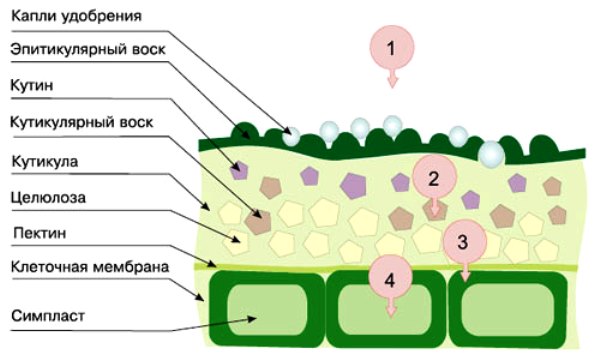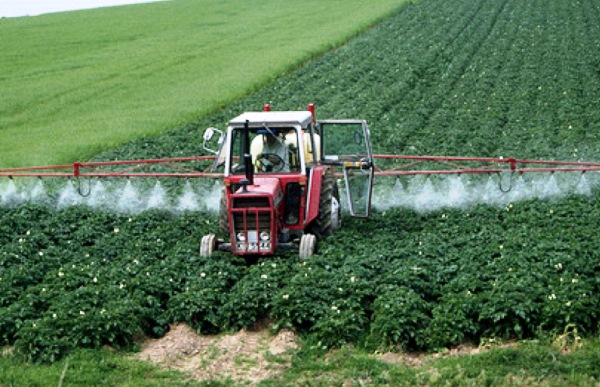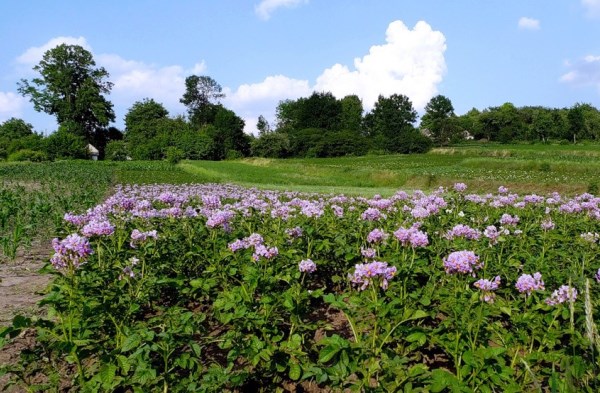What and when should you feed potatoes?
It is potatoes that are one of the most frequent guests of our dinner table. This is the main ingredient in first courses, it is included in salads, casseroles, zrazy or pancakes. For the holidays, what table will be without chiseled potatoes? It is actively used in folk medicine, and potato yeast is used for baking and beauty. Just for these reasons, potatoes are the most numerous plant in our garden. To obtain a high-quality harvest of potatoes in the fall, it is necessary to take care of it both in spring and in summer. Effective caring for it includes not only the destruction of pests, but also nutrition. Top dressing of potatoes is of several types: foliar and root. In the first case, the fertilizer falls on the potato bush itself. In the second case, it is the care of the root crop.
Read more about the types of dressings, about the time of feeding potatoes and about fertilizers later in the article.
Content
Types of dressings
It is believed that this plant does not "take" feeding too well, so they say that it is better to feed it in spring. By the time of the beginning of flowering, this culture assimilates only half of the feed provided to it, therefore, the potatoes should be "fed" after germination, at the beginning of budding.
As already mentioned, feeding potatoes is of two types: foliar and root.
Foliar feeding is nitrogen, manganese, phosphorus and microelements.
Nitrogen. Use urea (urea) for this vegetable, planted in sandy or other light soil. Urea should be less concentrated than for root feeding. Make sure that the substance is well dissolved in water. Otherwise, the plants will get burned.
There is one more "recipe" for feeding: 2 g of ammonium nitrate and 2 g of potassium chloride, 20 g of superphosphate, 0.1 g of copper sulfate. Mix all the ingredients, pour warm water, let it brew for 3 hours. Then strain and place in a sprayer. Such feeding at the beginning of flowering is useful, it starts physiological and biochemical processes (for example, photosynthesis), increases resistance to fungal diseases.
Manganese and boron. The first serves to enhance the flavor, the second to prevent the appearance of voids in the tuber. You can use the fertilizer Mag-Bor - 1 tbsp. spoon on a bucket of water.
Phosphorus. Well suited for growing late varieties of potatoes. Use 400 g of superphosphate per hundred square meters. Thanks to such feeding, the yield and starchiness of the tubers increases.
When foliar top dressing, it is important to know about the factors that affect the absorption of introduced substances by potatoes:
- temperature indicators of air and soil;
- the degree of soil acidity;
- the level of soil and air moisture;
- plant health and planting frequency.
The root method for feeding potatoes. It is carried out using cultivators-plant feeders, cultivators-hillers, herbicide-ammonia machines KRN-5.6, KRN-4.2, KRSh-8.1. Such dressings are effective on sandy loam soil or waterlogged soils.
There is also another way to carry out root feeding. Its name is “under the stake”.
A stake is hammered into the soil between the plants, with the help of which a deepening of 20 cm is made. Top dressing is poured into this depression.It is best to make one indentation for 3 bushes in a triangle. And then the potatoes will take the nutrients they need from the fertilizer, and the roots will remain intact and will not be burned.
When to feed potatoes
Typically, potato feeding by potato growers takes place in three stages.
- during the germination phase. The main feature is a pale green leaf and poor development;
- during budding;
- at the time of flowering potatoes.
Whether feeding is necessary can be checked by the weather. In dry weather, it is watered with top dressing during the budding (flowering) period - the moment of harvest accumulation.
Fertilizers and application rates
Fertilizers are necessary for foliar and root dressing. For each period of feeding the vegetable, specific fertilizers should be used.
- 1 period: dilute 1 tbsp for 10 liters of water. spoon of urea, 0.5 liters of mushy mullein, or 1 tbsp. a spoonful of bird (including chicken) droppings. One bush should take half a liter of solution.
- 2 period: 1 tbsp is diluted for 10 liters. a spoonful of potassium sulfate and 2-3 tbsp. tablespoons of wood ash and 1 cup of wood ash. This speeds up the flowering of the potato.
- Period 3: dilute for 10 liters of water: 2 tbsp. tablespoons of superphosphate, 1 cup of porridge-like mullein (or chicken droppings). Also half a liter under the bush.
If your plot is more than 100 m², feeding is done only with dry fertilizers for a separate plant bush.
For prevention, humate should be used. It helps the plant to survive and produce a good harvest, despite growing in extreme conditions. Some kind of antistress for the plant.
Thus, the correct and early care of the potatoes, the correct and timely feeding of the vegetable will bring you a good and tasty harvest.
Video "How to get a good harvest of potatoes"
The video covers all aspects of growing potatoes and tells how to care for the plant, how to feed it in order to get a good harvest.





